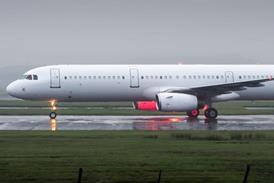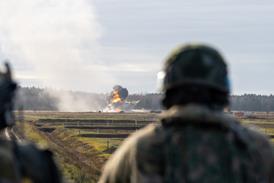Singapore Aircraft Leasing Enterprise (SALE) was founded in 1993 by Boullioun Aviation Services and Singapore Airlines (SIA). It is now owned by SIA and West LB, each with 35.5%, and two Singapore government investment arms with 29%. Its portfolio comprises 60 aircraft and it has 16 more Airbus A320s on firm order. Robert Martin, managing director and chief executive, spoke to Nicholas Ionides.
Q: What's the current state of the market?
A: The new aircraft market has cleared, meaning there are no more available for this year. This is the first time the market has been in this position since summer 2001. The used aircraft market - that's everything less than 10 years old - is clearing very rapidly. The only aircraft available are just ones and twos.
Very few Boeing 737s under 10 years old are available today. For the Airbus A320 family, it is the same thing. As for A330s, there just aren't any available, new or used, at the moment. On the Boeing 777 side, very few are available, unless any of the United Airlines ones start coming to the market.
We would expect the market to be tight at this time of the year, and for the first time since summer 2001 it is tight. Is this translating into higher lease rentals? Yes, it is. It is also translating into leasing companies - for the first time in a long time - having choice in terms of placements. This also means that if people are slow in payments, lessors are going to be more inclined to take aircraft out and move them to better homes.
Lease terms are shorter during bad times, longer in good times. Right now we are writing longer leases.
Are there any storm clouds in the blue skies? There always are in this industry. We are watching very carefully what happens at United. We are also watching the situation closely at US Airways. And we are watching the European charter market to see what happens once the summer season has come to an end.
While there is liquidity flowing into the market, a large number of banks have only just placed the aircraft from Sabena, Ansett and those situations [airlines that collapsed]. Those aircraft have been on the ground for two and a half years and I'm sure that has had an impact on banks' psyche.
Interest rates are also trending upwards on the long end, and obviously that's being factored into lease rentals.
Q: What are the reasons for the pick-up in the leasing market?
A: There are three things driving it. One is the rapid emergence of new low-cost carriers in Asia. The second is that so far the manufacturers haven't increased production, although that's only so far. And the third thing is we have seen a bipolar market appear between the airlines that had orders from prior to 2001 who have not placed more orders but have manufacturer's escalation built into those orders, versus the new low-cost carriers who have placed large orders since 2001 who now are getting them at much lower prices - and doing sale and leasebacks on a large number of them.
I am confident. I am more upbeat than I have been in three years. The signs [of improvement] began to appear late last year but it was really after the New Year that demand began to significantly pick up. I think it's a number of carriers realising that, particularly with the emergence of a whole new low-cost carrier market in Asia, it didn't take long to soak up the existing capacity that was available, and that's what happened.
Q: Leasing companies have not placed major aircraft orders since prior to the 2001 terrorist attacks in the USA. Is a new ordering cycle coming and is SALE itself in the market for new aircraft?
A: I am sure it is coming. If you look at the remaining order books, you will see that a number of them run out in 2006.
At SALE we will be looking for ways to deploy our capital after 2006. One alternative is to order aircraft from manufacturers. We are also still interested in purchase and leasebacks, and we are working on a whole series of them at the moment.
Q: Is Boeing's 7E7 going to be attractive to the leasing market?
A: In terms of the 7E7 replacing the 767 and other similar variants, absolutely - we think there is a market. Are the terms of the 7E7 attractive? I can't tell you because they haven't given me any at this point.
We are seeing some market change going on. A year ago I would have told you that Asia is a widebody market - absolutely. But with the emergence of the low-cost carriers, things are changing.
People have used widebody aircraft on the shorter-haul routes in Asia. I think they'll revisit those decisions in the medium term. The flip side of that is the question of whether low-cost carriers could come up with a model that works with medium-haul aircraft. I believe they can.
Source: Flight Daily News























